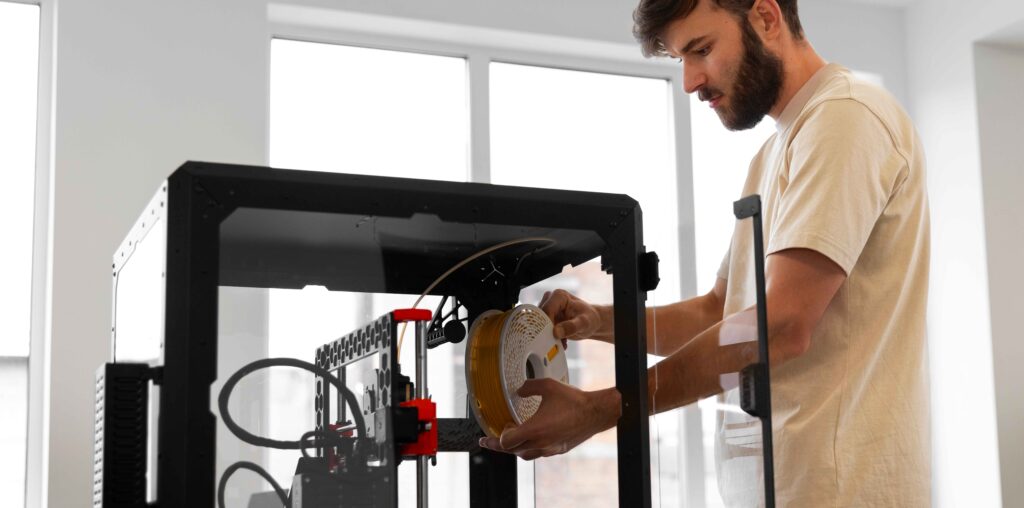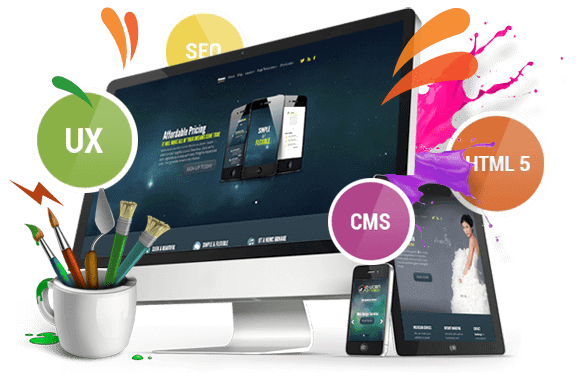Choosing the right 3D printing method can make a significant difference in the quality, cost, and usability of your parts. Among the many options available today, FDM (Fused Deposition Modelling), SLA (Stereolithography), and SLS (Selective Laser Sintering) are three of the most commonly used technologies.
Each has its own strengths, limitations, and best-use scenarios.
Understanding how these methods differ can help you make a better decision depending on your specific project needs.
Understanding The Basics
Before discussing the pros and cons, let’s look at what each process involves.
- FDM has a heated nozzle for melting thermoplastic. After the material is melted, it is deposited layer-wise to build the object.
- SLA has a UV laser to cure the liquid resin in a vat. It is then solidified layer by layer to form the final part.
- The SLS method involves the use of a high-powered laser to fuse powdered materials, such as nylon, without needing support structures.
While all three techniques are forms of additive manufacturing, the differences in materials, hardware, and post-processing requirements make them suited to different kinds of jobs.
FDM Printing: Affordable And Functional
FDM is one of the most widely used and accessible 3D printing methods. It is primarily used for making prototypes and basic functional parts. It works with thermoplastics like PLA, ABS, PETG, and Nylon, making it suitable for a wide range of applications.
Benefits Of FDM
- Cost-Effective: FDM printing has a low material and machine cost, making it ideal for budget-sensitive projects.
- Fast Turnaround: The printing process is relatively quick, especially for simple geometries.
- Material Variety: A wide range of filament materials are available, including flexible and temperature-resistant options.
Common Uses
- Rapid prototyping
- Functional mechanical parts
- Concept models
- Jigs and fixtures
While the surface finish may show layer lines and require post-processing, the overall strength and durability of FDM prints make them a practical choice for many industrial uses.
SLA Printing: High Resolution And Detail
SLA technology is primarily used to produce parts that have the requirement of smooth surface finish and demand fine details. Instead of extruding material, it uses a UV laser to cure photosensitive resin with high accuracy.
Benefits Of SLA
- Surface Finish: SLA provides smooth surfaces with very minimal layer visibility.
- High Accuracy: Capable of printing highly complex geometries and fine features.
- Material Options: Available in rigid, flexible, dental, and castable resins.
Common Uses
- Medical and dental models
- Jewellery patterns
- High-detail prototypes
- Presentation-ready parts
Although SLA prints are often more brittle than those made with FDM or SLS, their visual quality and precision make them perfect for display models and components with tight tolerances.
SLS Printing: Strength And Complexity
SLS stands out for its ability to produce strong, functional parts with complex internal structures without the need for support material. The technology uses a laser to sinter powdered materials, usually nylon or TPU, layer by layer.
Benefits Of SLS
- No Support Structures Needed: Parts are surrounded by unsintered powder, which acts as natural support during printing.
- High Strength and Durability: Excellent mechanical properties, suitable for functional end-use parts.
- Freedom of Design: Perfect for intricate or interlocking designs.
Common Uses
- Aerospace and automotive parts
- End-use mechanical components
- Functional prototypes
- Batch production of complex parts
SLS printing tends to be more expensive, but it offers a balance of strength, design freedom, and production scalability that justifies the cost of demanding projects.
Material Considerations
Each technology is compatible with different types of materials, which can also influence your choice.
FDM (Fused Deposition Modelling)
- Technology: Layer-by-layer extrusion of melted thermoplastic
- Material Type: Thermoplastics
- Example Materials: PLA, ABS, PETG, Nylon
SLA (Stereolithography)
- Technology: UV laser curing of liquid resin
- Material Type: Photopolymer resins
- Example Materials: Standard resins, flexible resins, dental resins
SLS (Selective Laser Sintering)
- Technology: Laser sintering of powdered material
- Material Type: Powdered polymers
- Example Materials: Nylon (PA12), TPU, glass-filled nylon
Surface Finish And Post-Processing
Surface quality can play a big role depending on whether your parts are functional, visual, or both.
- FDM: May require sanding or chemical smoothing to remove layer lines.
- SLA: Requires cleaning and UV curing but offers the best raw finish.
- SLS: May have a slightly grainy texture and needs powder removal, but no support.
Post-processing steps, including polishing or dyeing, can further improve both aesthetics and functionality.
Cost And Production Speed
Budget and timelines often determine which method to go with.
- FDM is the most affordable one and gives results very fast.
- SLA is moderately priced but delivers higher detail.
- SLS is costlier upfront but efficient for printing multiple parts at once.
If your goal is fast prototypes at low cost, FDM is typically best. If precision and surface detail matter most, SLA may be the way to go. For production-quality parts with complex geometries, SLS is often the preferred method.
Which One Should You Choose?
There’s no one-size-fits-all answer.
- Design complexity
- Required strength and durability
- Surface finish expectations
- Material performance
- Budget and timeline
At reputable 3D printing companies, the experts help clients match the right printing technology with their project goals. Through their experience, they can evaluate your design and recommend the most efficient and cost-effective method, whether that’s FDM, SLA, or SLS.
Summing It Up
If you are looking for a 3D printing service in Sydney that is full range, professional, uses advanced FDM, SLA, and SLS technologies, there is no better option than CAD Deziners. With fast turnaround times, high-quality materials, and a focus on precision, we cater to industries ranging from architecture and medical to automotive and manufacturing.
We don’t just stop at plastic. We also offer 3D metal printing for clients needing strength, heat resistance, and industrial-grade performance. Our 3D printing service is trusted by businesses of all sizes. Let our team help bring your designs to life, no matter how complex, detailed, or demanding.
Ready to print your next project? Contact CAD Deziners today for expert advice and high-quality results in FDM, SLA, SLS, and more.



